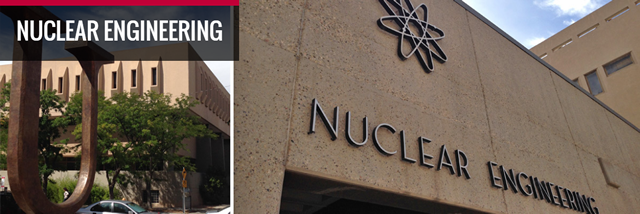
Nuclear Engineering ETDs
Publication Date
Fall 11-11-2016
Abstract
The ability to perform radiation transport computations in stochastic media is essential for predictive capabilities in applications such as weather modeling, radiation shielding involving non-homogeneous materials, atmospheric radiation transport computations, and transport in plasma-air structures. Due to the random nature of such media, it is often not clear how to model or otherwise compute on many forms of stochastic media. Several approaches to evaluation of transport quantities for some stochastic media exist, though such approaches often either yield considerable error or are quite computationally expensive. We model stochastic media using the Karhunen-Loève (KL) expansion, seek to improve efficiency through use of stochastic collocation (SC), and provide higher-order information of output values using the polynomial chaos expansion (PCE). We study and demonstrate method convergence and apply the new methods to both spatially continuous and spatially discontinuous stochastic media. New methods are shown to produce accurate solutions for reasonable computational cost for several problem when compared with existing solution methods.
Spatially random media are modeled using transformations of the Gaussian-distributed KL expansion--continuous random media with a lognormal transformation and discontinuous random media with a Nataf transformation. Each transformation preserves second-order statistics for the quantity--atom density or material index, respectively--being modeled. The Nyström method facilitates numerical solution of the KL eigenvalues and eigenvectors, and a variety of methods are investigated for sampling KL eigenfunctions as a function of solved eigenvectors. The infinite KL expansion is truncated to a finite number of terms each containing a random variable, and material realizations are created by either randomly or deterministically sampling from the random variables. Deterministic sampling is performed with either isotropic or anisotropic stochastic collocation (SC), the latter of which takes advantage of the monotonic decay of KL terms. Transport quantities are solved on realizations using Monte Carlo particle transport with Woodcock sampling (WMC). Surrogate models of system responses are constructed from SC solutions using the polynomial chaos expansion (PCE) from which probability density functions (PDFs) of response quantities are constructed. The error convergence of solution methods is examined as a validation of the choice of methods, a verification of method implementation, and to give insight towards parameter selection for efficient computation. Solutions are compared against benchmark values generated in a variety of ways including analytic solutions, computational solutions of simpler models, expensive benchmark computations, and published benchmark values.
Keywords
Karhunen-Loève, Monte Carlo, Polynomial Chaos Expansion, Nataf Transformation, Stochastic Collocation, Nyström Method
Document Type
Dissertation
Language
English
Degree Name
Nuclear Engineering
Level of Degree
Doctoral
Department Name
Nuclear Engineering
First Committee Member (Chair)
Dr. Anil Prinja
Second Committee Member
Dr. Cassiano de Oliveira
Third Committee Member
Dr. Mohammad Motamed
Fourth Committee Member
Dr. Brian Franke
Recommended Citation
Olson, Aaron J.. "Reduced-Order Monte Carlo Modeling of Radiation Transport in Random Media." (2016). https://digitalrepository.unm.edu/ne_etds/55


